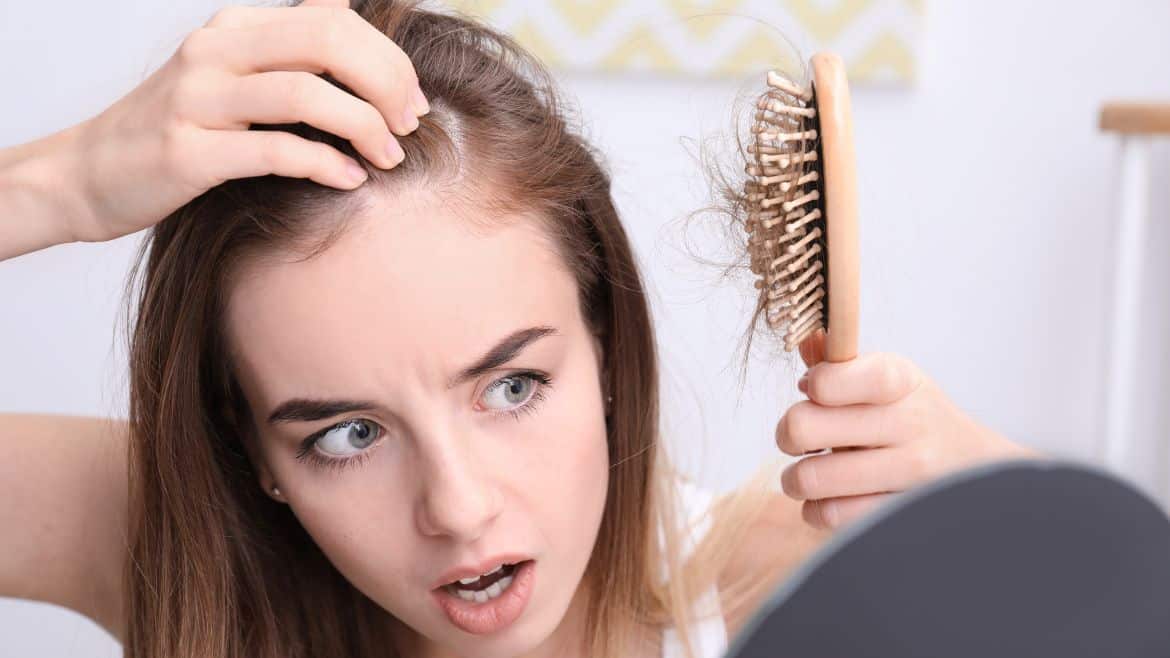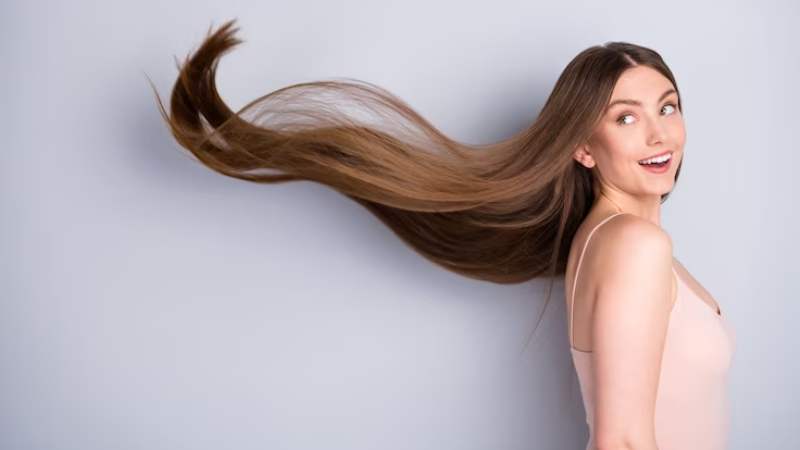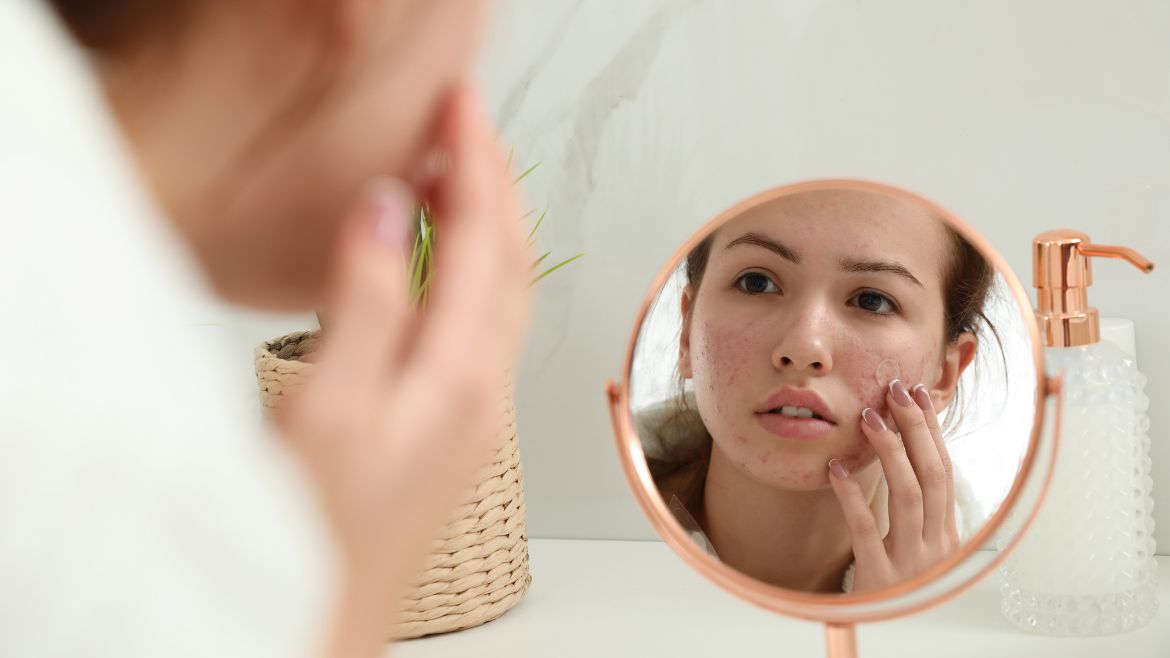You should consult a dermatologist if your hair part is expanding, you have bald areas, or you’re losing hairs every day. Hair loss may be classified into various categories, each with its own set of reasons. Although there’s nothing you can do to avoid hair loss, if you see a dermatologist early enough, you can benefit from therapy.
What is Hair Loss in Women?
Hair loss in women is defined as when a female loses her hair suddenly and heavily. Humans lose between 50 and 100 single hairs every day on average. Hair shedding is a normal process in which some hairs fall out and others grow. Hair loss occurs when the equilibrium is disrupted – when hair falls out and less hair grows in. Hair loss is not the same as hair shedding. Alopecia is the medical word for hair loss.
How Prevalent is Hair Fall in Women?
Many people believe that sudden hair loss is exclusively a problem for males. More than half of all women, however, are expected to endure considerable hair loss. Female-pattern hair loss (FPHL) is the most common cause of hair loss in women, affecting over one-third of those who are susceptible.
Which Women Faces Hair Fall?
Hair loss can strike any girl or woman at any time. However, it is more frequent in:
• Women older than 40 years.
• Women who gave birth recently.
• Women undergoing medication or chemotherapy.
• Women who frequently style their hair electronically.
• Women who tie their hair tight.
• Women who have had menopause.
Few Common Myths about Hair Fall
Myths about hair fall are very common. A few of them are:
• Excessive shampooing causes hair fall.
• Dandruff is the reason behind permanent hair loss.
• Stress causes permanent hair loss.
• Intellectual women face hair fall.
• Hats and wigs cause hair fall.
• Shaving head can save from hair fall.
What Are the Types of Hair Fall in Women?
There are three major types of hair fall in women:
• Anagen Effluvium: Medication that poisons a developing hair follicle.
• Telogen Effluvium: An increased number of follicles completing the telogen phase or the period where hair comes out.
• Androgenetic alopecia/female pattern alopecia/female pattern hair loss (FPHL)/baldness: This is the most prevalent kind. Hair thins on top and the sides of the head.
What Are the Common Causes of Hair Fall in Women?
The common factor which causes hair fall in women are as follows:
• Dieting without supervision
• Hair Styling
• Weight Loss
• Vitamin Deficiency
• Hair Breakage
• Nutritional Deficiency
What Causes Telogen Effluvium Hair Fall?
• Extreme physical shock and stress
• Extreme emotional stress
• Supplements and medications
• Hormonal changes
What Causes Anagen Effluvium?
• Chemotherapy
• Radiation Therapy
What Causes FPHL?
• Genes
• Aging
• Menopause
What Are the Treatment Options for Hair Loss in Women?
Treatment options for hair loss in women are:
• Proper Diet: Eating healthy food consisting of the proper and balanced nutrients is a procedure to prevent hair fall.
• Avoiding Tight Pull Outs: One must avoid making tight buns, tight braids, and other tight hairstyles, which pulls the hair out resulting in hair fall.
• Treating underlying conditions: Hair fall can be controlled by evaluating and treating thyroid problems, PCOD, or any other underlying medical conditions.
• Minoxidil: The FDA has authorized topical minoxidil spray in concentrations of 2% or 5% as a therapy for female hair loss. It boosts anagen of hair follicles and enhances scalp blood flow. It is not a miracle medicine and will not restore complete hair density. After four months of use, the impact may be visible, and for the best results, it should be taken for 12 months.
• PRP Therapy: After being processed in an automated centrifuge, PRP is extracted from the patient’s blood. It’s injected into the balding spots. PRP contains a variety of growth elements that promote hair growth and thickness. They also promote an overall favorable environment for hair development by boosting blood flow in that location.
• Hair Transplant: Hair transplant surgery includes carefully transplanting healthy, loss-resistant hair from the donor area of the scalp into balding areas. In genetic female pattern hair loss, the donor area is frequently the back and sides of the head, where hairs are naturally resistant to lose. The hairs that were transplanted continue to grow normally. In severe balding, especially in female pattern hair loss, a hair transplant may be the only option.
What are The Advantages of Hair Transplant?
Hair transplant treatment is growing in every corner of the world including India. Here are a few advantages of Hair Transplant:
• Permanent Solution: A transplant has long-term benefits. The hair follicles that had to be used initially from the “graft” are known to be genetically durable, which indicates that the hair in that area will not deteriorate even if the donor site suffers from female pattern hair loss or other genetic disorders. The follicles’ resistance to injury is maintained if they decide to relocate to a new location. This means you’ll have a lot of hair for the rest of your life.
• Natural Appearance: Since the 1970s and 1980s, when such therapy was known as “plugs,” hair transplant procedures have dramatically improved. Clients with out-of-date hair implants had oddly shaped locks. FUE seeks to harvest small strands with pinpoint accuracy, resulting in a smooth, silky hairline as well as a seamless head of hair. Nobody will ever realize you had therapy; they will just see your beautiful features.
• Boosts your Confidence: Your self-esteem decreases if you don’t feel wanted. You begin to avoid social situations and strangers. You may also find yourself ignoring activities you used to like, even though your hair had little to do with them. Your job security may be jeopardized as a result of your waning optimism, which inhibits you from sharing your ideas.
A hair transplant can also improve your public image and restore your self-esteem. It might also take it to levels you never thought conceivable.
• Enhances Looks: When baldness emerges, it has an impact on your appearance. It not only influences how you see yourself, but it may also have an impact on how others see you. Hair loss gives you the illusion of being older than you are.
• Hair transplantation may dramatically improve your appearance. You’ll appreciate gazing in the mirror every day and seeing how you view yourself. A transplant, on the other hand, can improve your look and make you feel more attractive.
Conclusion
Summing up ‘hair fall in women – Is hair transplant an option?’, we can comprehend that hair transplant is not just a therapy that helps you treat yourself physically and look younger than before, but also boosts your inner esteem and confidence. A Hair Transplant is the best option if you are loosing drastic hair loss confidence. However, if you have just started facing hair fall, it is best to consult a dermatologist and rule out the issue from the root.



